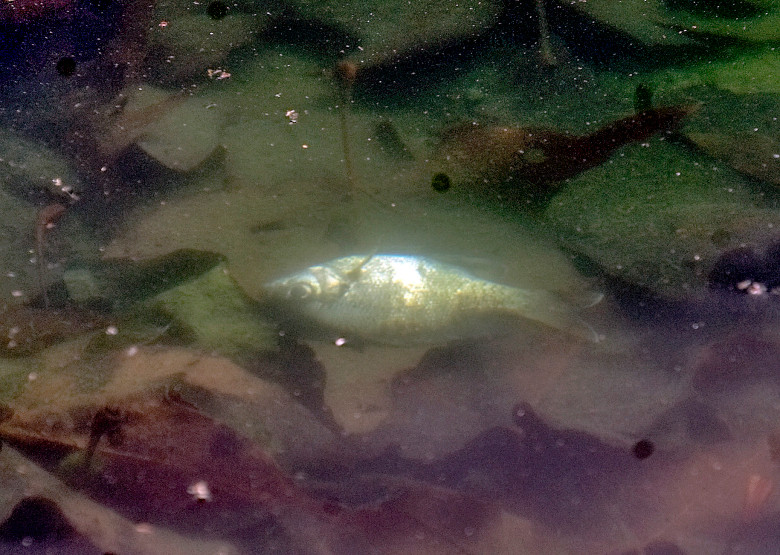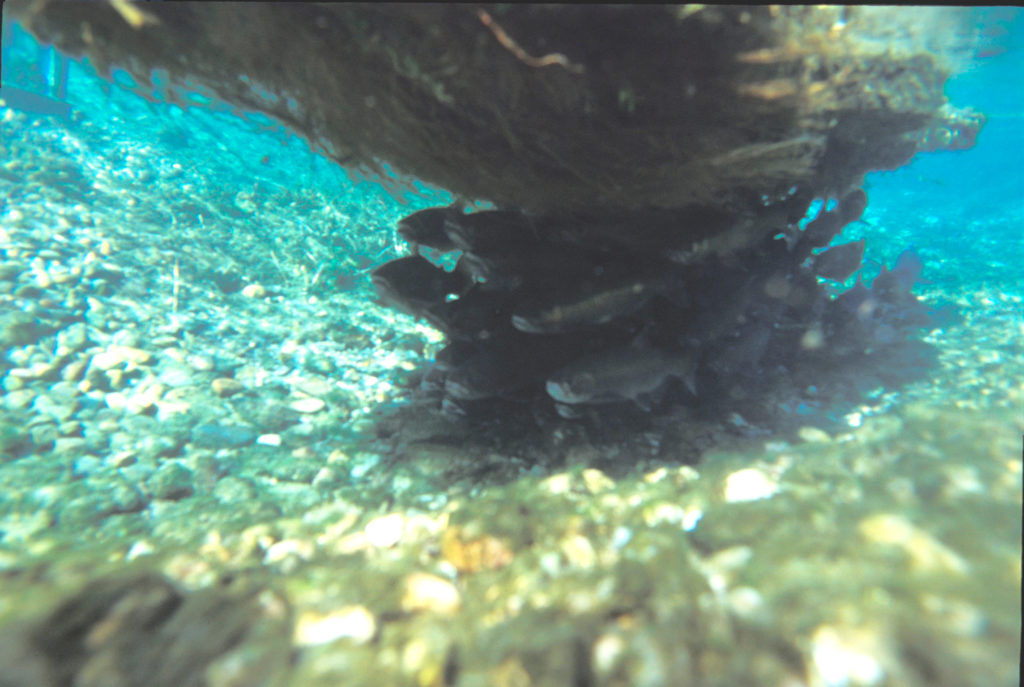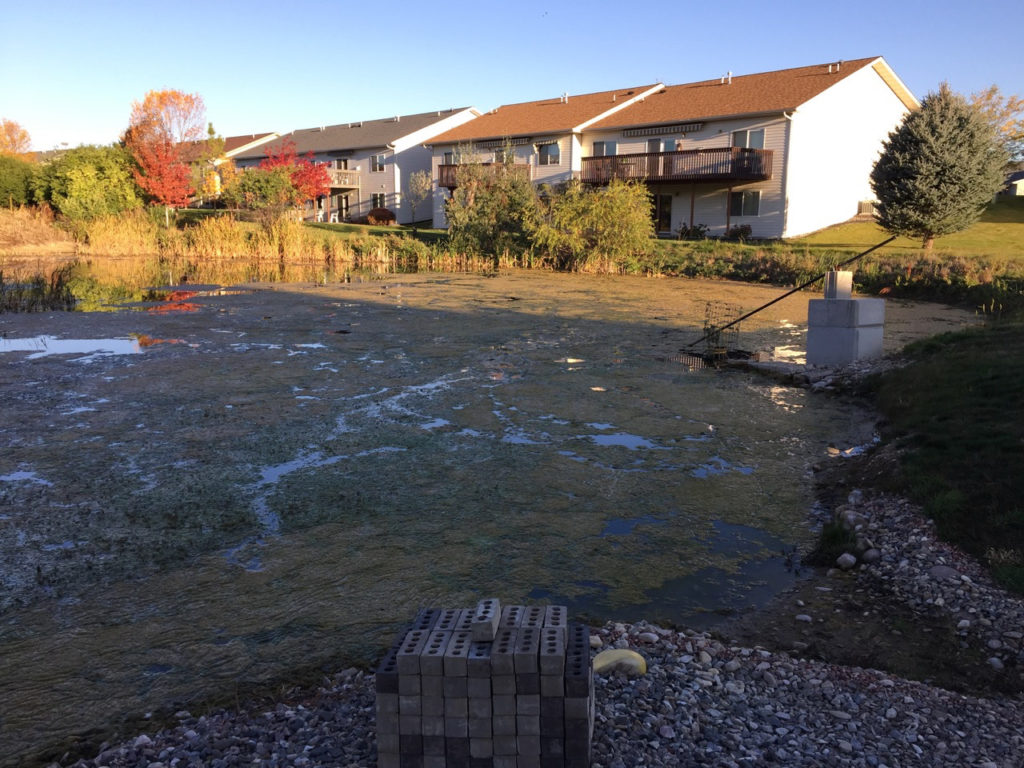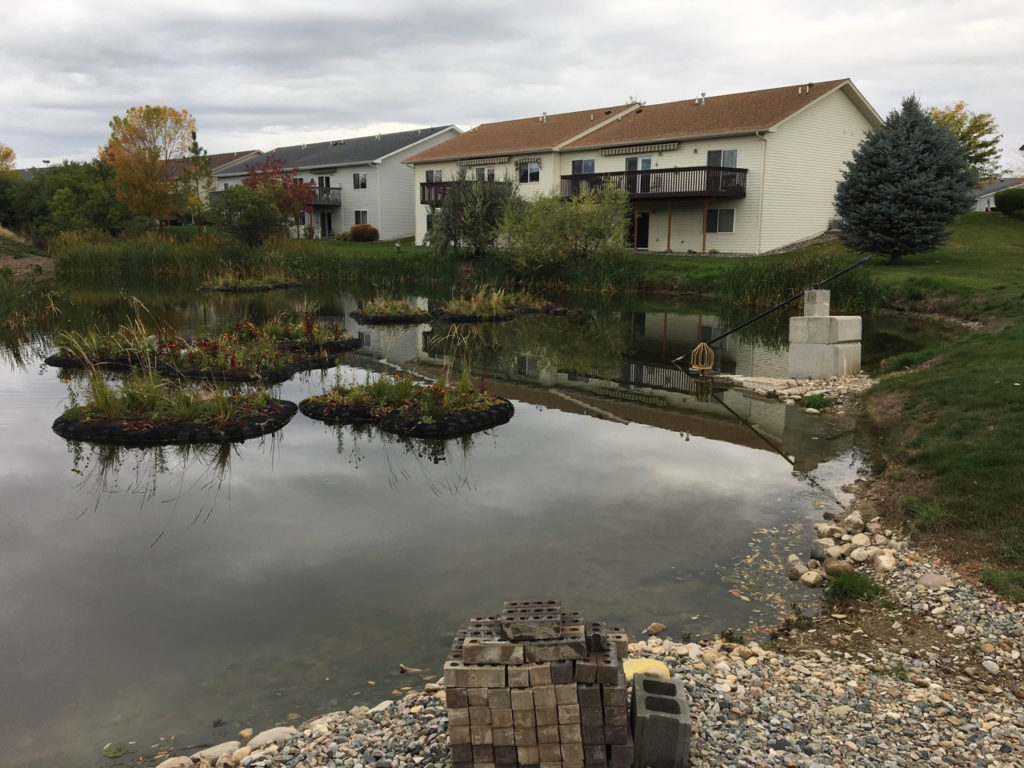
20 Jul 5 Steps to Create a Safe Haven for Your Fish, Prevent Fish Kills, and Have Healthy Water Year after Year (improving over time!)
Prevent Summer Fish Kills
The causes of Fish Kills are fairly consistent. Usually, your fish are stressed by low oxygen levels, warmer water temperatures, high concentrations of nutrients and algal growth, and no real safe haven to hide in for relief. Your water is unhappy. Your fish are unhappy. These are manageable conditions. You can develop a safe haven on your backwater that will reduce or even eliminate the potential for algae blooms and Fish Kills.

1. Eliminate your use of chemicals.
That’s right. Stop spending time and money on chemical additives that contribute more to the cycle of an unhappy pond than they do to a long term biologically based and ecologically sound solution. Quick fix chemical treatments to kill algae, though endorsed by many a pond guy, also kill the beneficial microbes in the pond. Then, all the dead material sinks to the bottom and contributes to next year’s troubles. You don’t need this. It is treating the symptom and contributing to the cause.
2. Manage your feeding strategies.
We all realize that anything that goes into our water has an effect. One of the common adds to our water, especially if we are raising fish in any form, or feeding waterfowl, is food. Any unconsumed food becomes part of the nutrient additions as it breaks down. One of your goals during the hotter months needs to be to manage nutrient increases. Watch what occurs when you feed the fish. Your fish will tell you when they have had enough food—they simply stop eating. Any food fed after this will sink to the bottom and cause problems later. Only give them the food they need. There are other naturally occurring food sources for them, especially if there are overhanging banks or small islands. Not overfeeding is an easy step towards eliminating Fish Kills.
3. Think small.
The management of large ponds can feel overwhelming at times, but you can think small and manage one column of water at a time. You read that right. The survival of a good representation of this years’ spawn is dependent on the available food and refuge you provide in your pond.
You can create an area of safe haven for your fish by adding a small floating island. This strategy, to create a healthy spot habitat, is backed by evidence. In the water column surrounding and beneath a floating island, within the first three months, the biofilm that grows on the surface area of the island attracts the microbes that compete with the algae for the nutrients. Plants with quick growing roots reach down into the water and carry the dissolved oxygen with them. The shaded water under the island maintains a lower temperature. It’s like a nucleus that radiates concentrically.

The best refuge area for fish is within the root structure of plants that are on an overhanging bank or a floating island. Various sizes and species may co-exist in the same area all the while enjoying the available oxygen and food sources.
Fish intuitively are attracted to these areas of higher dissolved oxygen that provide a consistent and favorable food source and shade for cooler temperatures. This will become their go-to spot should there be challenges in other parts of the lake or pond. These areas do not have to be large, but having a few of them positioned in different parts of the water body is valuable.


4. Add oxygen.
One of the major causes of Fish Kills is low or no dissolved oxygen. This condition will place your fish into a health compromised position. Using aeration for oxygenating and circulation is a proven benefit for your waters, but the common practice of adding a fountain does little to help with Fish Kills because the dissolved oxygen stays at the surface of the water. When the summer turnover occurs, the low dissolved oxygen from the bottom winds up at the top. And so, sadly, do the fish that you’ve been nurturing for five, seven, ten years. So add aeration strategically. Placing aeration under the islands is a marriage made in heaven! It provides a larger footprint for a safe haven for any oxygen dependent pond life.
5. Go fishing.
Though obviously not for koi ponds, managers of a game fish pond will welcome this important part of nutrient management and algae control. Harvesting the larger fish and developing the smaller ones is an opportunity to remove phosphorous, the leading cause of algae growth. If you haven’t seen the videos of the fishing out at Fish Fry lake, it’s time to take a look. The video is embedded below! Go fishing!
Dealing with a Fish Kill is a nightmare.
Managing lakes and ponds to minimize algae growth and create healthy habitat for fish can be stressful. Experiencing a Fish Kill is horrible, not just because of the smell and clean up, but because you put work into creating a fish habitat, and it’s awful to realize your work was for nothing. Fish Kills during the summer months are avoidable, and pond managers can experience happy water and healthy fish with a science backed biological and ecologically sound solution.
Make an investment in your future.
This year, skip the chemicals and make a real investment in your future. Please check out our videos, our case studies, and the science. Your pond or lake should be a source of enjoyment for you. If we may be of any assistance (we’ve gathered a ton of information over the years!) reach out to Laddie with any questions—he’s happy to help.

Sorry, the comment form is closed at this time.